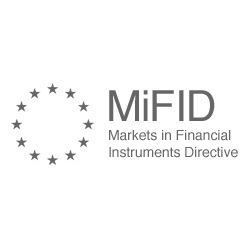 The new Markets in Financial Instruments Directive (MiFID) II regulation is helping to support better execution and transparency for primary issuance and all market participants. It builds on MiFID which was initially introduced in 2004 and adds to the legislation broadly known for harmonizing investment services across the European Economic Area.
The new Markets in Financial Instruments Directive (MiFID) II regulation is helping to support better execution and transparency for primary issuance and all market participants. It builds on MiFID which was initially introduced in 2004 and adds to the legislation broadly known for harmonizing investment services across the European Economic Area.
The 2nd Annual Best Execution and Transparency under MiFID II event hosted by Marcus Evans recently provided greater insight for participants on the effects of MiFID II and discussed how participants can prepare for the new regulations. Topics discussed during the two-day event included a holistic approach to implementing MiFID II, how MiFID II is affecting financial institutions, various case studies and more. Prior to the event Beate Born, global MiFID II project lead at UBS, provided some insight from her perspective on the incoming regulation.
MiFID II
MiFID II was initially introduced in 2004 to harmonize legislation for investment services across the European Economic Area. In April 2014, the European Parliament approved MiFID II. MiFID II seeks to strengthen the harmonization efforts previously introduced and enacted through MiFID. MiFID II addresses standardized reporting requirements, cross border passporting, counterparty transactions, pre-trade transparency, post trade transparency, securities finance transactions and more. MiFID II will take effect in January 2018.
Harmonizing investment services across Europe has greatly helped market activity and promoted new primary issuance. It provides a number of benefits and is helping to make markets more structured. Specifically, it will improve transparency, better streamline and process market data, improve trade execution, create more orderly trading behavior and make trading costs more clearly defined.
Perspective from UBS MiFID Director
In her comments on the new market legislation, Beate Born of UBS discussed the challenges for banks in meeting new reporting requirements, the business impacts of MiFID II and banking initiatives. Born says that MiFID II is significantly expanding the reporting requirements for both banks and investment companies in order to provide greater market transparency and unification around all types of transactions. Two specific areas of focus include greater reporting for investment companies and increased reporting requirements for over the counter (OTC) trading. In providing advice for company initiatives Born also noted the importance of making technology system processes and changes a high priority in order to ensure effective and timely compliance.
Advantages for Primary Issuance
MiFID and MiFID II are both positive factors for primary issuance. Historically the European financial markets have been fragmented due to cross border legislations and processes. New market directives have helped to improve these challenges and lower costs making primary issuance a more attractive alternative for corporate funding, cash flow and financing needs. Other benefits of a more harmonized market now include increased standardization for currency management, legal obligations and collateral management.
Improvements for Primary Issuance and Existing Market Participants
MiFID II has been a focus for the European markets since 2014 when it was approved by the European Parliament. The legislation seeks to further harmonize the investment servicing operations within the European financial markets and takes the initial enactment of MiFID another step further. Its goal overall is to improve all aspects of investment operations for the financial markets. This includes significantly expanded reporting requirements for all aspects of the market with a specific focus on investment company reporting and increased reporting for OTC markets. It also enhances legislation for cross border passporting, counterparty transactions, pre-trade transparency, post trade transparency, securities finance transactions and more.
In her insights from the 2nd Annual Best Execution and Transparency under MiFID II event Beate Born highlighted the important role of technology in ensuring effective implementation and compliance with the new rules. Technology infrastructures throughout Europe will play an important part in improving the region’s harmonization and providing better streamlined market data access for all participants.
Overall, the new legislation will provide for better execution and improved transparency, making the financial markets across Europe much more attractive for primary issuance. Additionally, all aspects of the market will see improved transparency and reporting for significantly improved harmonization, cost standardization and trading efficiency.


